
Feature Article
Home-cooking Methods and Food Safety
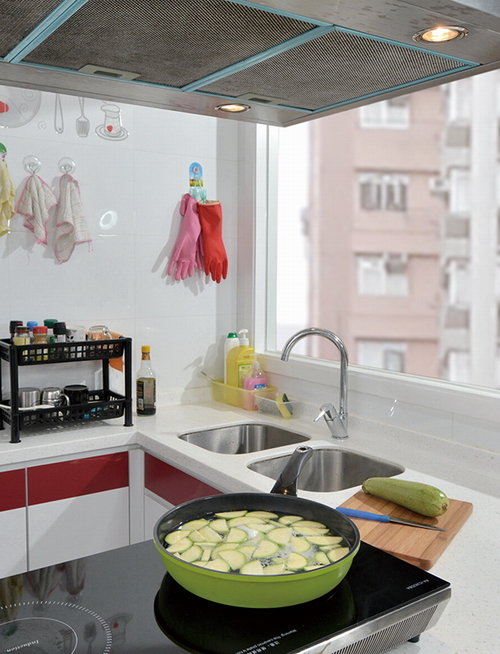
Cooking is a process of preparing food by mixing, combining and heating different kinds of ingredients. It not only helps kill pathogens and reduce biological hazards in food, but also enhances the colour, odour and flavour as well as modifies the texture of food, making food easier to be digested. However, cooking may also generate substances that are harmful to our health.
The high temperatures involved in the pan-frying, deep-frying and baking of food can cause chemical changes in food and generate process contaminants such as acrylamide, certain polycyclic aromatic hydrocarbons (PAHs) and heterocyclic amines (HCAs), which have been found to be probably carcinogenic to humans or possibly carcinogenic to humans. In addition, high temperatures will expedite oxidation of fats in food to form substances unfavourable to health, such as cholesterol oxidation products (COPs) which can be more injurious to heart and blood vessels than cholesterol. On the other hand, the cooking methods of boiling and steaming, usually at a temperature of not exceeding 100ºC, rarely lead to the formation of acrylamide, PAHs and HCAs. Even so, repeated and prolonged cooking (more than three hours) of meat should be avoided because it may also cause the release of COPs. In view of this, the control of both the temperature and time of cooking is important.
Tips for Reducing Risk of Home-cooking
By adjusting the cooking time, temperature and/or using alternative food preparation methods, the amount of contaminants formed in the cooking process can be reduced and we can eat more healthily.
Shorten the Frying Time
- Blanch for one minute before stir-frying vegetables. Parboil or steam meat and potatoes until half done before pan-frying or deep-frying.
- Pan-fry or deep-fry potatoes and other starchy products to light golden brown and avoid excessive browning.
- Use a food thermometer to gauge the meat temperature. Remove from heat as soon as the meat is done.
Lower the temperature
- Do not keep the heat high throughout the frying or baking process.
- Avoid heating cooking oil to the smoke point.
Other handling methods
- Trim visible fat from meat and poultry before cooking. This helps reduce the production of PAHs and COPs.
- Cut potatoes into thick slices. This can decrease the generation of acrylamide as the surface area to volume ratio of thicker slices is lower than that of thinner slices.
- Coat potato slices with a batter (e.g. batters of corn starch or wheat flour) before deep-frying in order to lower acrylamide formation.
- Avoid reusing used oils to fry food.
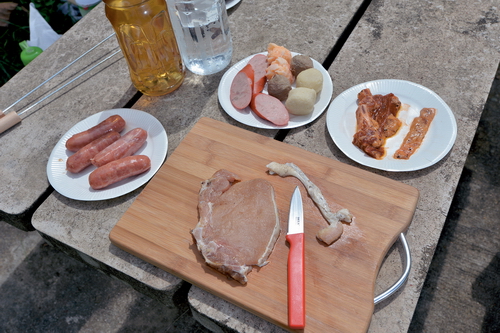
Readers' Corner
Only Consume Plants Known to be Safe
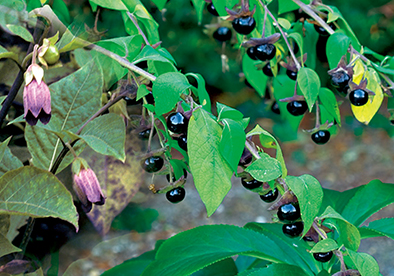
Recently, there have been two local food poisoning cases where the victims consumed Solanum americanum (American black nightshade) and narcissus respectively. The Centre for Food Safety (CFS) urges members of the public not to consume plants that are not edible.
Both S. americanum and narcissus contain alkaloids which are a group of chemicals naturally present in different organisms, including bacteria, fungi, plants and animals. Many alkaloids are toxic to other organisms and therefore they serve as chemical defense compounds to protect plants against predators.
In China, about 1 300 plant species distributed in 140 families are found to be poisonous. Among them, Ericaceae (e.g. red azalea), Euphorbiaceae (e.g. poinsettia and candlenut tree), Solanaceae (e.g. American black nightshade) and Liliaceae (e.g. spider lily, narcissus and hyacinth) comprise a relatively large number of poisonous species. Members of the public are advised to avoid picking wild plants for food use, purchase food from reliable suppliers and only consume plants that are known to be safe. Do not eat any part of a plant if in doubt.
Upcoming Activities
Roving Exhibitions on Food Safety
The CFS holds a series of exhibitions on specific themes in shopping centres of public and private housing estates in different districts across the territory every year. Exhibition panels covering topics such as food safety and nutrition are displayed and educational videos are shown to enhance public knowledge on making safe and suitable food choices. Please visit the CFS website (www.cfs.gov.hk) for regular updates on the exhibitions.
Answers:
Across
- SWEETENER
- GLYCOALKALOID
- NO
- SODIUM AND SUGARS
- PRESERVATIVE
Down
- STEVIOL GLYCOSIDES
- UNSATURATED FATTY ACIDS
- ACID
- FLAVOUR ENHANCER
Listeria monocytogenes in Cheese Products
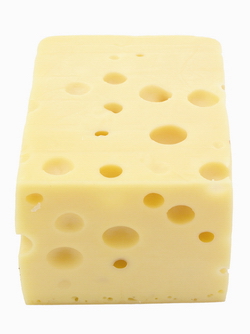
In general, cheeses are produced by coagulating the casein and partially discarding the resulting whey. Nowadays, there are more than 500 types of cheeses throughout the world. The varieties come about as a result of different manufacturing processes with such variations as the types of milk, coagulation methods, starter cultures, addition of salt and duration of ripening.
Cheeses, particularly soft cheeses, have been implicated in listeriosis outbreaks worldwide. Foodborne listeriosis is a relatively uncommon but serious disease caused by L.monocytogenes , a bacterium that can be easily destroyed under normal cooking temperature but is able to grow slowly at a refrigeration temperature as low as 0°C. Asymptomatic infection of listeriosis probably occurs in most healthy people, but it can pose serious health risks for the susceptible populations including pregnant women, the elderly and immunocompromised individuals such as AIDS and diabetic patients.
L. monocytogenes in cheeses can originate from raw materials, in particular raw milk, or come from the processing environment, or result from cross-contamination between the final products and raw materials.
Since pasteurisation, by heating raw milk to a specific temperature for a period of time, kills L.monocytogenes effectively, cheeses made from pasteurised milk are generally considered of lower risk unless post-process contamination occurs.
For cheeses made from unpasteurised milk, their safety relies on a range of factors that influence the presence, growth, survival and inactivation of pathogenic microorganisms including L.monocytogenes .
In general, the risk of the presence of L. monocytogenes is much higher in soft cheeses made from unpasteurised milk than hard/extra hard cheeses made from unpasteurised milk. The lower acidity and higher moisture of the former favours the growth of L. monocytogenes . As revealed in the report of a recent risk assessment study conducted by Food Standards Australia New Zealand, while the risk of Listeria infections associated with the consumption of raw milk soft cheeses (Feta and Camembert cheese) is estimated to be low to the general population, for the susceptible populations, the risk is high. However, the risk associated with the consumption of raw milk Cheddar cheese (a type of hard cheese) and extra hard cheese would be negligible to low/very low to both general and susceptible populations.
Key Points to Note:
- Cheeses, particularly soft cheeses, have been implicated in outbreaks of listeriosis worldwide.
- Cheeses made from pasteurised milk are generally considered of lower risk.
- Soft cheeses made from unpasteurised milk are the most risky.
Advice to the Trade
- Maintain good food and personal hygiene; avoid cross-contamination.
- Provide detailed information on food labels to help consumers make informed food choices.
- Clearly indicate on the labels whether the cheese products are made from raw, unpasteurised or pasteurised milk.
- Consider providing more information on food labels, such as the degree of hardness of the cheese products.
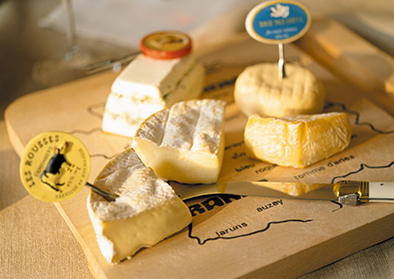
News on New Dishes
Beef Burger in Multi-grain Bun
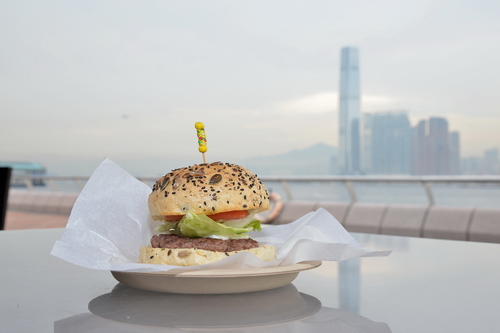
Baking homemade bread has gradually become a recent trend. However, have you thought of making a burger at home? In this issue, we are honoured to have invited Chef SHIU Yu-ho of "iBakery Express", a signatory of the Food Safety Charter and a social enterprise of the Tung Wah Group of Hospitals dedicated to training and employing people with disabilities, to demonstrate how to make a "Beef Burger in Multi-grain Bun".
| Preparation Steps | Small Tips, Big Wisdom | |
|---|---|---|
Receiving  |
Purchase frozen rump steak and other ingredients such as lettuces, cucumbers and tomatoes from approved and reliable sources. The multi-grain buns are supplied by a licensed food factory under the iBakery. | Upon receipt of the ingredients, check with meticulous care to ensure their freshness. Rump steak and multi-grain buns are kept under refrigeration at -18oC or below before use. |
Defrosting  |
Defrost frozen rump steak and multi-grain buns in a refrigerator at 4oC or below. | Defrosting in a refrigerator at 4oC or below not only ensures food safety but also keeps the fresh taste of beef. |
Rinsing  |
Soak and rinse ingredients such as lettuces, cucumbers and tomatoes thoroughly. | Rinsing vegetables under running water or soaking vegetables in water for one hour can effectively reduce the risk of the intake of pesticides. |
Mixing  |
Add salt, sugar and beef seasoning powder to the defrosted rump steak. Shape the minced steak into burgers. | Plan the production schedule ahead to avoid preparing the filling too far in advance. This can prevent the growth of pathogenic microorganisms. |
Pan-frying  |
Pan-fry the burgers until well done. | Cook the minced rump steak thoroughly, with core temperature at 75oC or above for at least 30 seconds. Pan-fry the burgers until they turn light golden brown (but not dark brown). This will shorten the time of cooking at high temperature and prevent the formation of harmful substances during the cooking process. |
Preparing the sauce  |
Mix salad dressing and seasoning. Set aside. | Store the sauce in a refrigerator at 4oC or below. Estimate the demand for the sauce carefully to avoid over-production. |
Preparing  |
Place a piece of fried burger inside a toasted multi-grain bun. Add lettuce, cucumber slices, tomato slices and other ingredients on top. Serve with sauce. | Beef burgers should be consumed as soon as possible after preparation to avoid prolonged storage at room temperature. They should be discarded after being stored at room temperature for more than 4 hours. |
Tips from Chef SHIU:

- Before the preparation process, the multi-grain buns will be toasted in an oven by setting the top and bottom heat temperatures at 150oC and 100oC respectively to make the buns crispy on the outside and soft inside.
- The mixed beef filling should be stored in a refrigerator at 4oC or below for later use. Burgers will be made after orders are taken to keep ingredients fresh and ensure food safety.
- The "iBakery Express" adopts food safety management measures and exercises strict control over the food production process. Clear standards and control measures have been put in place for each step of the production process, including purchase of raw materials, storage of stocks, food preparation as well as storage and delivery of products, together with record keeping, monitoring and testing, to ensure that all products are hygienic and safe for consumption.
Food Safety Plan Corner
Beef Burger in Multi-grain Bun

Ingredients:
Frozen rump steak, lettuces, cucumbers, tomatoes and multi-grain buns
Seasoning:
Salt, sugar and beef seasoning powder
Sauce:
Salad dressing and seasoning
Steps:
- Defrost frozen rump steak in a refrigerator at 4oC or below.
- Take out the lettuces, cucumbers and tomatoes which have been stored at 4oC or below. Rinse and cut them into slices.
- Add salt, sugar and beef seasoning powder to the defrosted rump steak. Shape the minced steak into burgers.
- Pan-fry the burgers until well done.
- Place a piece of pan-fried burger inside a toasted multi-grain bun. Add lettuce, cucumber slices and tomato slices on top. Serve with sauce.
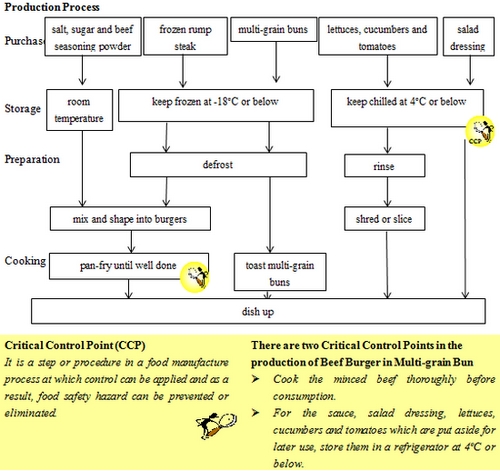
Briefing of Activities
Food Safety Day 2014 cum Secondary School Food Safety and Nutrition Labelling Quiz Competition

Food Safety Day is an annual signature event organised by the CFS of the Food and Environmental Hygiene Department with a view to promoting tripartite collaboration among the Government, the food trade and the public.
Under the theme of "Safe and Smart Ways to Cook", the Food Safety Day 2014 aimed at promoting to the public good cooking habits to reduce the formation of harmful substances during the cooking process for ensuring food safety. We invited the signatories of the Food Safety Charter to join the event in recognition of their continued support for food safety. Representatives from food trade associations participated in the signing ceremony of "Safe and Smart Ways to Cook". They were committed to providing quality services grounded on food safety to Hong Kong people and tourists.
The Food Safety Day 2014 was held on 4 July 2014 (Friday) at Chiang Chen Studio Theatre of The Hong Kong Polytechnic University. The event kick-started a series of activities in the year and delivered food safety message about good cooking methods. Besides, the Final Round and Award Presentation Ceremony of the Secondary School Food Safety and Nutrition Labelling Quiz Competition, co-organised by the CFS and the Education Bureau and supported by the Committee on Home-School Co-operation, were held in the afternoon that day. The following were the prize winners:
Champion: Sing Yin Secondary School
First runner-up: St. Clare's Girls' School
Second runner-up: Buddhist Yip Kei Nam Memorial College
Best Support Team: St. Clare's Girls' School
Once again, we congratulate the winning teams and express our thanks to all the guests attending the event.


Food Safety Q & A
| Q: Is there any difference between pasteurisation and sterilisation? | |
|---|---|
| Ming and his mother go to the supermarket to do some shopping today. | |
| Mum: | Ming, help me pick a carton of milk. |
| Ming: | Okay, I'll do it right now. Huh? Mum, why is that some milk are kept refrigerated but some are displayed on shelves at room temperature? |
| Mum: | From the web page of the CFS which I have recently browsed, I have learned that pasteurised milk must be kept refrigerated and sterilised milk may be stored at room temperature. |
| Ming: | What is pasteurisation? How is it different from sterilisation? |
| Mum: | Pasteurisation is a relatively mild heat treatment, usually performed below 100°C. Its aim is to reduce harmful microorganisms in food, e.g. Mycobacterium bovis , Salmonella and Escherichia coli O157. Since pasteurisation does not destroy all microorganisms, it is important to follow the storage instructions provided on food labels. For example, such foods as pasteurised milk and pasteurised fruit and vegetable juices should be refrigerated at or below 4ºC to prevent them from deterioration. On the other hand, sterilisation is a more severe heat treatment to destroy all microorganisms capable of growing in food under normal conditions of storage at a high temperature. Unlike pasteurised products, sterilised products can be stored at room temperature. |
| Ming: | Will the two methods of heat treatment affect the nutritional quality and taste of foods? |
| Mum: | The nutritional quality and taste of foods will not be significantly affected by pasteurisation. On the contrary, since the conditions for sterilisation are more severe than pasteurisation, sterilisation may cause changes in nutrition and taste of foods. |
| Ming: | Apart from milk, are there any other foods that can be pasteurised? |
| Mum: | Pasteurisation can be used to process various foods, including eggs, fruit and vegetable juices, honey, etc. |
| Ming: | Is it mandatory for milk to be pasteurised or sterilised? |
| Mum: | According to the law, milk must be heat-treated by pasteurisation or sterilisation before sale for human consumption. If we drink pasteurised or sterilised milk, we can benefit from milk while avoiding the risk of falling ill from drinking raw milk. |
| Ming: | Oh, I see! |
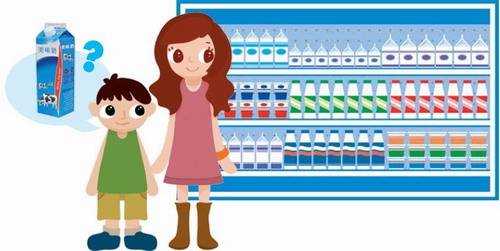
Truth against Fallacy
| Must there be pineapples in a pineapple bun? | |
|---|---|
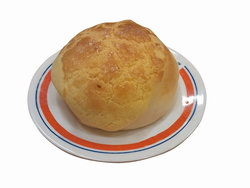 |
|
| Carrying shopping bags with both of their hands, Ming and his mother leave the supermarket in a contented mood. | |
| Mum: | A new bakery has just been opened in our neighbourhood. Let's give it a try. |
| Ming: | Sure, I want to have a sausage bun. I love sausages! |
| Mum: | For me, I'd like to try a freshly baked pineapple bun - hot and steaming, it would taste awesome. |
| Ming: | I want to eat a pineapple bun, too! Pineapple is my favourite fruit. I want it, I want it! |
| Mum: | Ha-ha-ha, Ming, the pineapple bun doesn't contain any pineapples. |
| Ming: | How come? It is called a pineapple bun. There are sausages in sausage buns, and red beans in red bean buns. How come pineapple buns don't have any pineapples in them? |
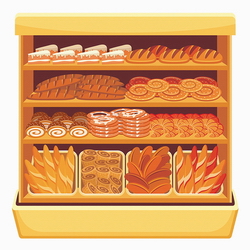  |
|
| Ming and Mum arrive at the new bakery. | |
| Bakery owner: | Pineapple buns! Fresh from the oven! Would you like to try one? |
| Ming (puzzled): | Hi, is the pineapple bun made of pineapples? My mum told me that it doesn't contain any pineapples. |
| Bakery owner: | Kid, your mum is right. A pineapple bun actually doesn't contain any pineapples. It is named so only because the checkered golden brown top crust resembles the outer surface of a pineapple. |
| Mum: | This is just the same as the hot dog. It has its name from its closeness in appearance to a dachshund dog. |
| Ming: | Wouldn't it be misleading to the consumers? |
| Bakery owner: | The issue about food products with false descriptions had been discussed in the Trade Consultation Forum that I attended some time ago. The Forum is organised by the CFS on a regular basis. |
| Mum: | Food products with false descriptions? |
| Bakery owner: | The CFS carries out regulatory and enforcement work in accordance with the provisions on food safety, food standards and labelling requirements under the Public Health and Municipal Services Ordinance (Cap. 132) and its subsidiary legislation. If CFS staff come across any cases involving false trade descriptions while performing their duties, they will refer such cases to the Customs and Excise Department (C&ED) for follow-up enforcement action in accordance with the Trade Descriptions Ordinance (Cap. 362), which protects consumers by prohibiting false or misleading trade descriptions in respect of goods provided in the course of trade. |
| Mum: | You're saying that it's the job of the CFS and the C&ED to ensure food products that are not what their names indicate will not reach consumers? |
| Bakery owner: | Exactly. If they're prepackaged foods such as canned foods, the CFS will take enforcement action in accordance with the Food and Drugs (Composition and Labelling) Regulations (Cap. 132W). It will be an offence if the food name or designation is false, misleading or deceptive in any respect as to the nature of the food. However, any customary or traditional name in use in Hong Kong before the commencement of the regulations and indicative of a particular food may continue to be used as the name of that food, like "pineapple bun" and "cocktail bun", until the Authority by notice in the Gazette prohibits such use. |
| Ming: | Then how can we avoid buying foods that turn out not what their names indicate? |
| Bakery owner: | Kid, in fact, many other traditional foods in Hong Kong named for certain ingredients contain none of those ingredients. There are also other foods named from their legendary origins. To know the actual ingredients contained in the foods, consumers may read the ingredient lists on the packages when purchasing prepackaged foods and to ask the shop staff for information on the contents of foods. This can avoid misunderstanding. |
| Ming: | I see. Can I have a pineapple bun without any pineapples? |
| Mum and Bakey owner: | Ha-ha... |

Brain Gym
Crossword Puzzle
Use the clues below to complete the crossword puzzle.
Across
- A food additive for sweetening food.
- A natural toxin in potatoes. It will increase significantly in green, sprouted or damaged potatoes.
- Is " No MSG" considered a nutrient content claim?
- Two nutrients that are required to be listed on nutrition labels in accordance with the Food and Drugs (Composition and Labelling) Regulations (Cap. 132W), apart from protein, carbohydrates, total fat, saturated fatty acids and trans fatty acids.
- A functional class of food additives. It can inhibit, retard or arrest the process of fermentation, acidification or other deterioration of food.
Down
- According to the Sweeteners in Food Regulations (Cap. 132U), a compound permitted to be used as a sweetener in food.
- A type of fatty acids containing at least one nonconjugated and trans double bond. The sum of all these fatty acids constitutes trans fatty acids.
- A functional class of food additives. It can enhance the sour taste of food.
- Which functional class does the food additive ethyl maltol belong to?
(Answers can be found on page 3.)
Enquiry and Subscription
Printed copies of the Food Safety Bulletin can be obtained from the Communication Resource Unit located at 8/F, Fa Yuen Street Municipal Services Building, 123A Fa Yuen Street, Mong Kok, Kowloon. For enquiry, please call 2381 6096. The public may also visit the website of the CFS ( http://www.cfs.gov.hk ) for the online version.